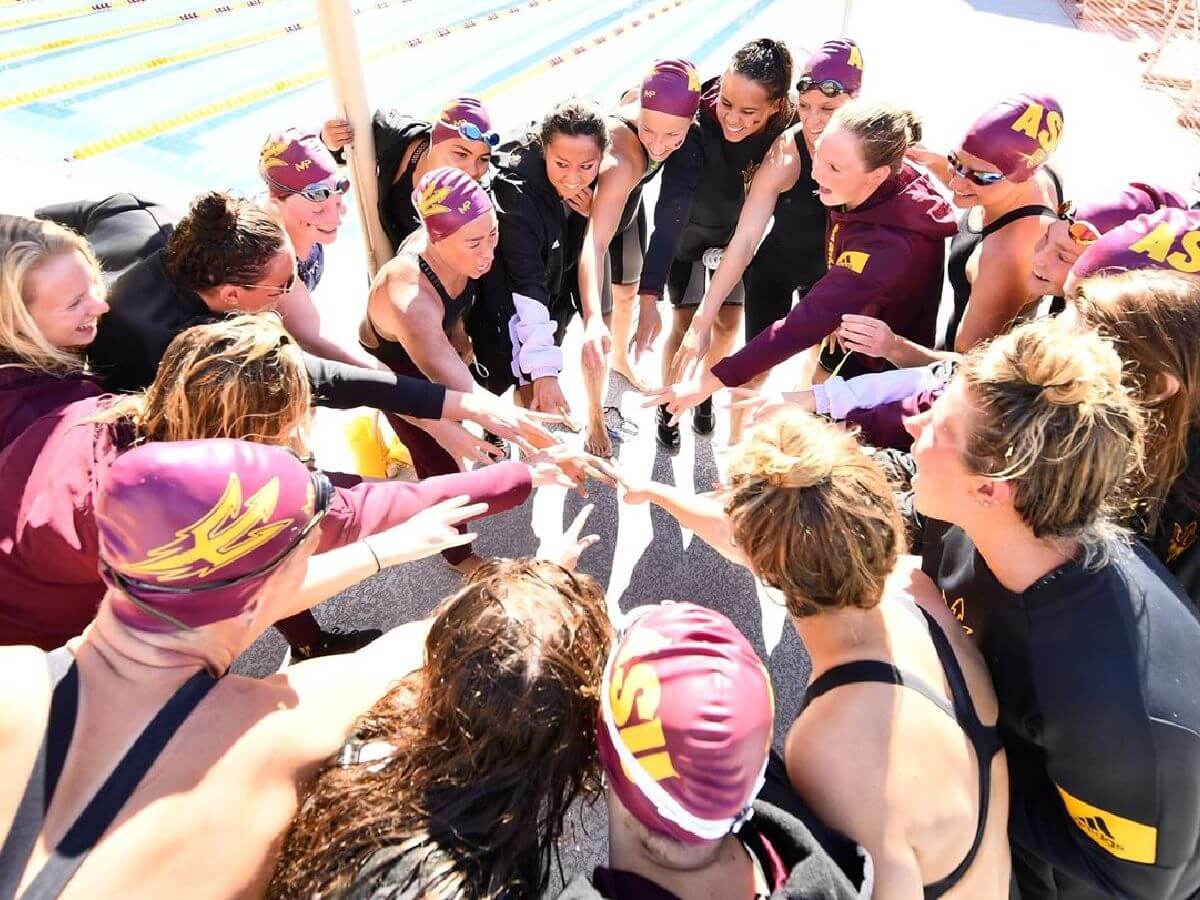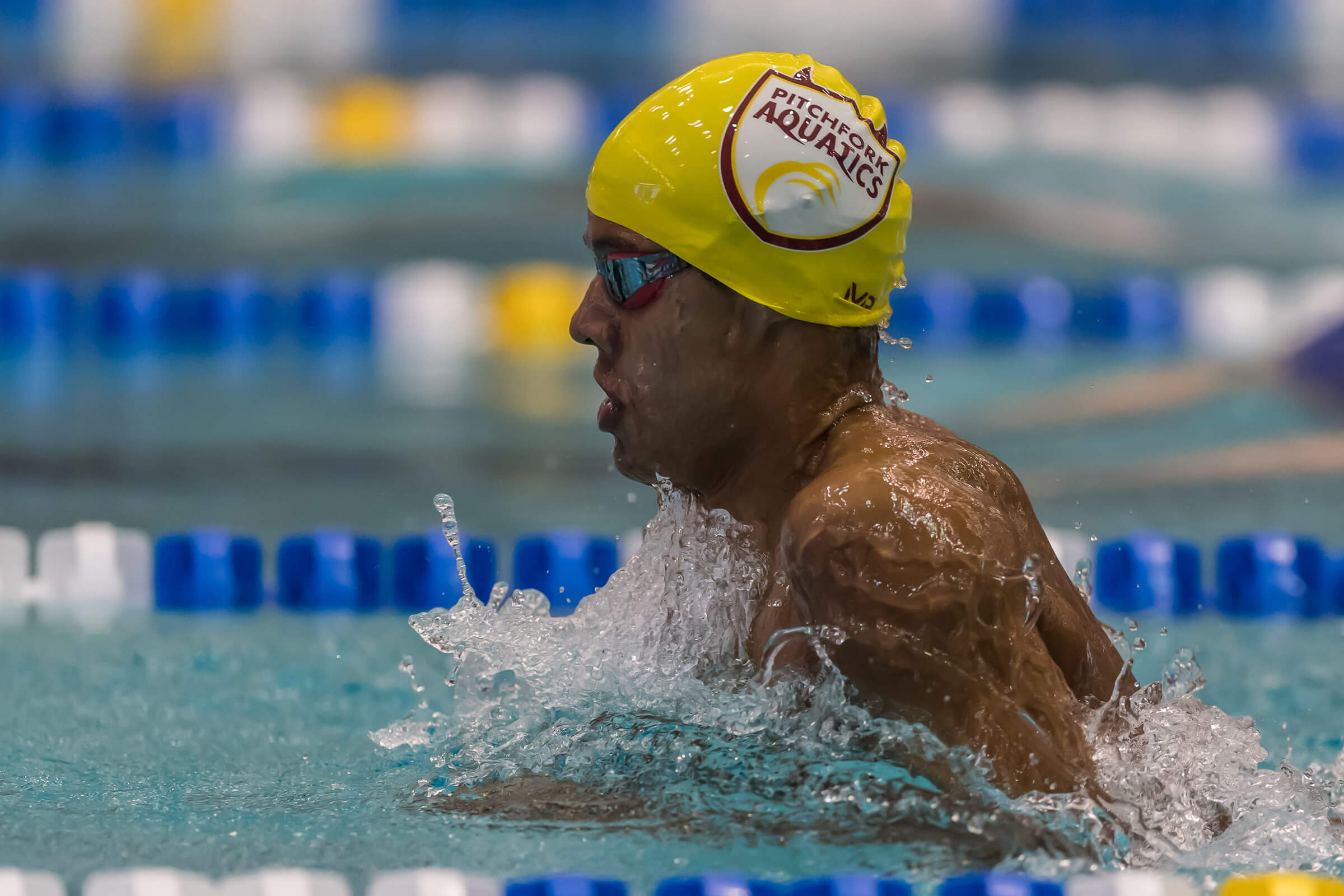
‘I Would Do It Again’: Arizona State Back Stronger off Team Redshirt Year
When Nora Deleske and her Arizona State teammates left the Zoom meeting in July 2020, they were convinced by the vision laid out by Bob Bowman. Nearly 18 months later, Deleske hasn’t wavered.
Along the way, though, there were moments when sustaining that belief wasn’t easy, when there was nothing rosy about the uphill slog of training without a meet in sight.
“I think we thought it was going to be a lot, I wouldn’t say easier, but there were a lot more roadblocks in the way that we haven’t had to experience before,” Deleske told Swimming World last week. “And so I was really proud of all of the men and women on our team just because we handled adversity really well.”
The Sun Devils made headlines in the summer of 2020 when Bowman announced that the program would redshirt its swimmers for the season, which at that point was very much in doubt due to the COVID-19 pandemic. As they’ve returned to competition this fall, there are no regrets to that decision.
Emma Nordin; Photo Courtesy: Peter H. Bick
“I would do it again, and I feel like it was the call then,” Bowman said. “And so did the NCAA, they gave everyone another year. We just did it first.”
Bowman’s calculus then was that his Sun Devils were in no position to compete in the fall. They’d been out of the water from March through August. To ramp up to a season would do his swimmers a disservice, and it would rob them of the natural rhythm of a college season, with its late-fall peak for invitationals and spring finals.
So instead of rushing toward an incomplete season, Arizona State took itself out of the mix. It took pressure off swimmers pushing for the Tokyo Olympics the next summer not to have to decide on a gap year, and alleviated any conflict for those who had redshirted or deferred the 2019-20 season before the Games were postponed. The decision was, as Bowman says, the kind of creative solution that the university was looking for. It was made in consultation with the administration, and it met with near unanimous approval from the swimmers.
“It was a really big team decision, more so, and it felt like we were a part of it, which I was super grateful for,” Deleske said. “When we first heard the news, I think it was a lot more excitement and oh my gosh, this is going to be amazing, this is the best thing that could happen, because no one really knew what was going on. “
At that point in July, it looked as if the NCAA might not have any college sports in 2020-21. Not until August, when cases hit a summer lull and a groundswell of opposition to football postponement, did the situation start to change. For swim teams, though, that still meant condensed schedules, many with league-only opponents or no fall schedule, including no invitationals.
Part of what made it an easier sell at Arizona State is the building process that Bowman has overseen since he was hired in April 2015. His goal was to elevate the Sun Devils into a national power. To some of his veterans who’ve been along for the ride in that process, framing the redshirt as a down payment on future success fit that plan.
“The very first thing that Bob said to is, look, this is an investment for our program,” captain Evan Carlson said.
“We kept them safer,” Bowman said. “We were able to have a year of development. I think we had some kids on our team that I feel like needed a year, and I also think we’re able to keep some guys who were fifth-years who got to develop as well.”
That doesn’t mean it was easy, physically or emotionally. The FOMO of seeing friends and former teammates swimming was very real. The thought of a Pac-12 Championships and an NCAAs going on without them was painful. For some of the underclassmen who might not have known what they were missing, the challenge was a seemingly interminable wait until their next (or first) meet. Veterans still felt the sting of not being able to compete, even if they kept the larger picture in mind.
“It’s been ups and downs,” Bowman said. “I’d be less than honest to say it’s been a walk in the park, because there’s been many challenges even though we weren’t competing.”
It required a lot of believing in each other, Deleske said, providing the validation and motivation that usually comes from external sources.
“It was this huge grind, which now all of us have an amazing training base and we’re super grateful for that now,” she said. “But looking back on it and being in there, it was definitely difficult to get the freshmen and those younger classes excited about swimming collegiately because they’ve never had that experience yet. The coaches did a great job continuing to tell us that, hey you’re going to have your time to race, but focus on school right now, get done what you need to get done and take this as a learning experience.”

Jarod Arroyo Photo Courtesy: Peter H. Bick
“We had faith in the coaches. We had faith in each other,” Carlson said. “So while everybody was off competing at their own meets, we had our meets here, and I think that a lot of our guys and girls were able to throw down very fast times and we went into the summer season pretty excited about things.”
The big challenge for Bowman was devising “competitive opportunities” to fill the void. Much of that came under the banner of Pitchfork Swim and Dive at local sectional meets. Friday practices would usually be reserved for racing of some kind, with the timing system in for a skins competition or off-events races. It gave swimmers a chance to gauge their progress, but also boosted their resolve with a chance to cheer for teammates and remind themselves of the college atmosphere they came to Tempe for. Bowman said the team lowered a handful of short-course yards records during the year, even without an actual meet. They also concocted informal meets, like a scrimmage against the University of Arizona for the men this fall while the women opened their season in Washington.
Deleske left the year off with a better sense of how to race herself. She cites a handful of best times from a long-course tune-up for Olympic Trials last summer that featured just two or three Arizona State swimmers per heat. That notion of not needing an external rival to bring out the best in her felt empowering.
“I think that kind of stuff goes to show how the coaches changed our minds,” Deleske said. “When you’re in a race sometimes, you worry so much about what the person is doing next to you, and it really solidified that, just worry about what you’re doing. Take the time to do all your details right. Take the time to just really hone in on the small things, and you’ll see people doing amazing things, and I think that’s something that’s really exciting for us coming into this year. I’ve seen all these men and women do amazing things and I know you’re going to see that at the end of the year.”
The redshirt paid off for a number of individuals. Bowman was pleased with the Sun Devils’ performance at the U.S. Olympic Trials in the summer. ASU was represented in Tokyo by Jarod Arroyo, swimming for Puerto Rico, plus incoming freshman Leon Marchand of France.
In its first big meet of the 2021-22 season, Arizona State impressed at the NC State Invitational with 10 program records, led by Marchand, Emma Nordin and a new mark in the men’s 800 free relay. Grant House flourished in the freestyle events. Getting back to racing in dual meets – the women opened Oct. 16 at Washington State, the men Nov. 6 by hosting USC – was a different sensation, with the captains having to show young swimmers the ropes. (As a consequence of the redshirt, around half the roster is either true or redshirt freshmen.) But Deleske said that representing Arizona State and instead of Pitchfork definitely feels different.
The entire experience has brought the team closer, a byproduct Bowman had hoped for. Having leaned on each other in so many difficult moments over the last year, the support structure is primed for a season that looks much more normal. The brotherhood that Carlson and others once talked about in abstract terms has become very, very real.
“I think the camaraderie of the team has gone through the roof through the last year,” Carlson said. “We all went through something that no one expected to go through, with the pandemic and everyone redshirting, and just the fact that all of us shared that really unique experience brought a lot of us really, really close.”
